LABORgLAskAtALOg LABORATORY GLASSWARE CATALOGUE
LABORgLAskAtALOg LABORATORY GLASSWARE CATALOGUE
LABORgLAskAtALOg LABORATORY GLASSWARE CATALOGUE
Sie wollen auch ein ePaper? Erhöhen Sie die Reichweite Ihrer Titel.
YUMPU macht aus Druck-PDFs automatisch weboptimierte ePaper, die Google liebt.
TECHNICAL INFORMATION | PRODUCT-SPECIFIC SECTION<br />
TECHNICAL INFORMATION | PRODUCT-SPECIFIC SECTION<br />
Bottles<br />
Laboratory bottles<br />
DURAN ® laboratory bottles are chemically resistant and stable. The extensive range of original<br />
accessories includes screw caps for the widest possible range of applications. Alongside the standard<br />
PP screw cap for everyday laboratory use, further caps made from various plastics and having special<br />
properties are available. DURAN ® laboratory bottles are completed by suitable pouring rings from<br />
different plastics, which enable drip-free working. As almost all GL 45 bottles of 100 ml capacity and<br />
above use the same thread size, screw caps and pouring rings are fully interchangeable. The bottles,<br />
pouring rings and caps are autoclavable/ sterilisable.<br />
Properties<br />
Light protection<br />
• amber bottles are opaque up to 500 nm<br />
• plastic coated bottles are opaque up to 380 nm<br />
• Application: storage of light sensitive substances<br />
High thermal shock resistance<br />
Due to their temperature properties, the bottles are suitable for autoclaving and sterilising (see<br />
page 213, general section). Because of the bottom geometry and the wall thickness, direct heating<br />
with an unshielded flame is not recommended. When using an electronic heating plate or water<br />
bath laboratory bottles should be heated gradually.<br />
Notes on use:<br />
Pressure resistance<br />
DURAN ® laboratory bottles are, with the exception of the pressure-resistant DURAN ® pressure plus<br />
bottles, in general not suitable for use under pressure or in a vacuum. DURAN ® pressure plus bottles<br />
are pressure resistant from -1 to +1.5 bar (overpressure) due to a modified geometry and increased<br />
wall thickness.<br />
Sterilisation<br />
When sterilising or autoclaving contents, the screw cap must only be loosely fitted (max. one turn).<br />
The contents may expand or boil causing a large pressure difference in a closed vessel, which may<br />
well result in explosive failure. Alternatively, a DURAN ® membrane cap may be used. Pressure<br />
equalisation takes place through the PTFE membrane, while at the same time the membrane cap<br />
can remain tightly closed, greatly reducing the risk of contamination. See also page 213, general part.<br />
Cleaning<br />
Cleaning should be carried out manually in a soaking bath or automatically in a dishwasher (see<br />
page 209, general part). When cleaning in a dishwasher, load so that there is no glass-to-glass contact<br />
(especially the threads) to avoid chips or abrasions.<br />
temperature difference between the contents and the bath does not exceed ΔT = 100K. This will<br />
ensure that the frozen material is warmed uniformly from every side without damaging the bottle.<br />
The contents can, however, also be thawed slowly from above, so that the surface melts first, allowing<br />
the material to expand.<br />
Laboratory bottles with plastic coating<br />
The coating of DURAN ® Protect bottles is a resistant and transparent plastic coating based on<br />
a cross-linked copolymer.<br />
The coating adheres securely to the glass surface and fulfils the following functions:<br />
• Protects the glass surface against mechanical damage (scratch protection).<br />
• Holds the fragments together in the event of the glass breaking (splinter protection).<br />
• Minimises liquid loss if the glass breaks (protects against contents escaping and splash).<br />
• Absorbs UV rays up to a light wavelength of 380 nm (light protection).<br />
Usage tips:<br />
• The plastic coating does not increase the pressure resistance. These bottles are designed for<br />
pressure or vacuum applications.<br />
• If the plastic coated bottle breaks during use, the contents and the plastic coating are likely to<br />
come into content. A test for any interaction between plastic and contents should be carried out<br />
to ensure that the contents remain unchanged and can be further used.<br />
Temperature resistance<br />
Do not expose DURAN ® protect bottles to open flames or direct heat, e.g. on a laboratory hotplate.<br />
The maximum operating temperature is + 135 °C and thus the bottle is suitable for use in an autoclave.<br />
Long-term exposure to temperature (> 30 minutes) should be avoided. DURAN ® protect bottles<br />
can be used for freezing to –30 °C and used in microwaves. Thermal and chemical stresses can<br />
result in coating discolouration.<br />
Autoclaving:<br />
The following procedure, bearing in mind the maximum temperature resistance, is recommended:<br />
• Steam sterilisation at + 121 °C or + 134 °C.<br />
• The cycle duration should not exceed 20 minutes.<br />
(See also page 213, general section)<br />
When sterilising, the screw cap should only be loosely applied (max. one turn - do not tighten),<br />
or use a membrane cap that allows pressure equalisation.<br />
Freezing substances<br />
Recommendation: The bottle should be frozen slanted at an angle of 45 °, filled to a maximum 3/4<br />
(to enlarge the surface area) and dependent on the properties of any screw caps or other components<br />
used. For the blue PP screw cap the minimum temperature is – 40 °C. Alternatively the Premium<br />
screw cap can be used (min. working temperature: -196°C).<br />
See also page 206, general part.<br />
Thawing frozen substances<br />
Frozen contents can be thawed by immersing the bottle in a liquid bath while taking care that the<br />
216<br />
217


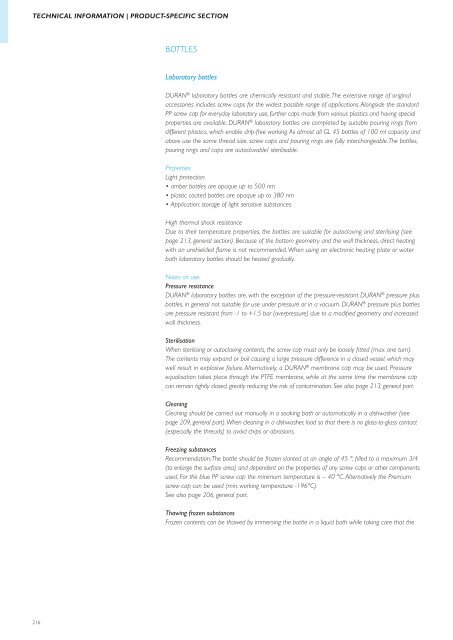
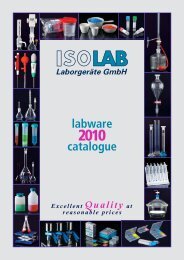
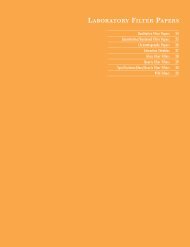
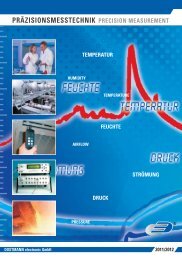
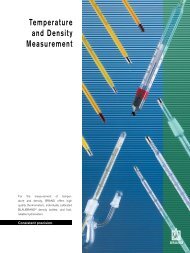
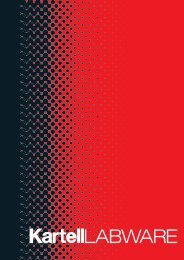

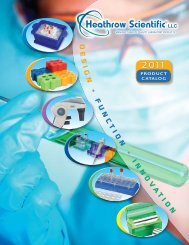


![Download [12.5MB] - Labtek](https://img.yumpu.com/24756492/1/184x260/download-125mb-labtek.jpg?quality=85)
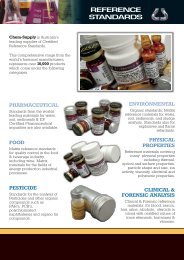
![DYMO Healthcare Brochure [2MB] - Labtek](https://img.yumpu.com/24756484/1/190x240/dymo-healthcare-brochure-2mb-labtek.jpg?quality=85)
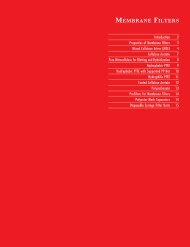
![Download [12.5MB] - Labtek](https://img.yumpu.com/24756470/1/184x260/download-125mb-labtek.jpg?quality=85)